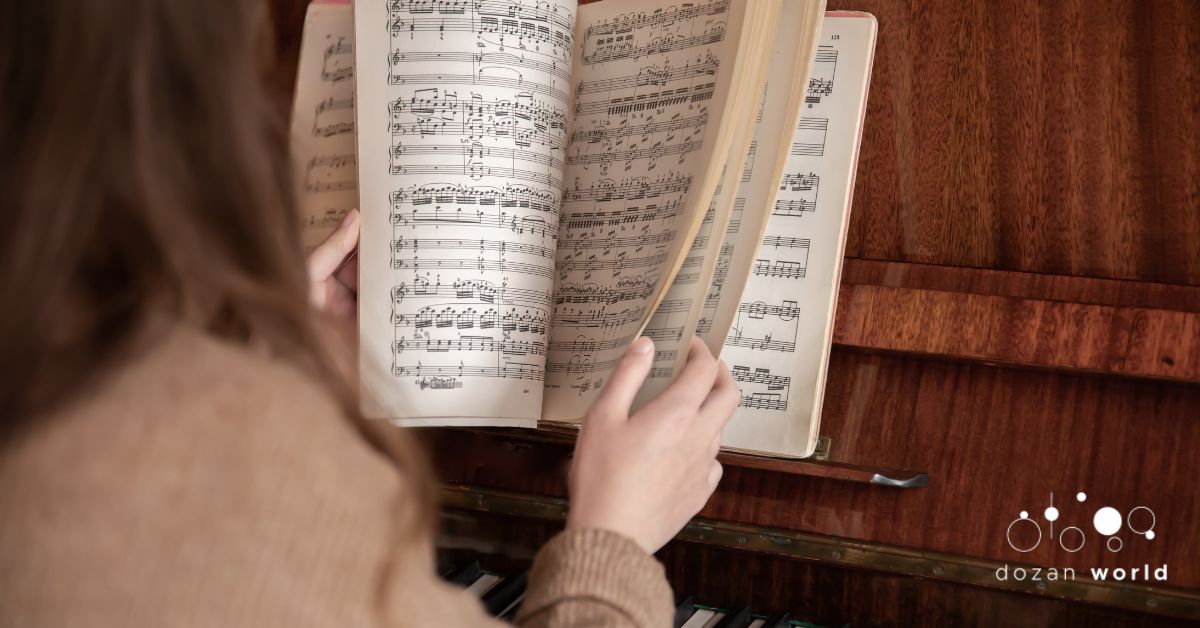Your Cart is Empty

As a choir artist or someone who manages one, you'd agree that SATB (Soprano, Alto, Tenor, and Bass) is undoubtedly the most popular choral arrangement in classical and contemporary vocal music. What makes this structure stand out is the balanced harmony, allowing your choral group to explore a wide dynamic and emotional range. SATB scores bring out the best in any choir. They are ideal for all settings and are known for accommodating different musical styles.
Like most other choir groups in the West, most of your repertoire would consist of Western classical compositions. And why not? From Renaissance motets and Baroque masterpieces to contemporary choral works, you are never short on inspiration. For centuries, Western classical choral music has held center stage in global concert halls. But as a choir group, you'd always look to expand your repertoire. If you are looking for inspiration beyond the Western classical and contemporary works, at Dozan World, we invite you to try our collection of Middle Eastern SATB scores.
The rising popularity of Middle Eastern SATB scores is a new but rising phenomenon. At Dozan World, we are witnesses to this as the choral community on both sides of the Atlantic is increasingly embracing music that reflects a broader spectrum of cultural influences. Middle Eastern music has intrigued Western musicians for ages whenever they have had exposure to it. However, the lack of formal documentation that most musicians in the West are used to was a hindrance, but not anymore. We have taken the initiative to help you add Middle Eastern SATB scores to your repertoire.
Whether you're a seasoned conductor or a student choir director, we have the collection that will energize your ensemble. Our collections offer a rich palette of expression, engagement, and cultural relevance. There are times when your choir's repertoire feels stagnant, and by exploring SATB scores from a different region, you challenge yourself and improve your skills as a musician. Your choir will move beyond the comfort zone of tonal progressions and lyrical themes and enjoy experimenting with new scales. This journey is exciting to say the least and adds fresh energy and perspective to your musical horizon.
At Dozan World, we continually expand our collection to cater to a diverse audience of choral groups, from young students to professional choir groups. We work closely with professional composers and music arrangers in the Middle East to offer a broad choice to enthusiasts looking to explore the rich musical heritage of the Middle East. Here are a few of our recommendations you can begin with -
That's not all; we offer a wide range of refreshing and soulful blends that draw on regional heritage, modal scales, and rhythmic complexity in our collection. Explore our collection today and download these SATB scores. Add these vivid, soul-stirring gems from the Middle East to your repertoire.
What is a "maqam"?
A maqam is the system of melodic modes used in traditional Arabic music. Similar to a scale in Western music, a maqam is a set of notes that form a melody, but it also includes specific rules for how those notes are used, including particular melodic patterns, phrases, and ornamentation. Different maqams evoke different emotions and moods. For example, the blog mentions "Nahawand," which is similar to the harmonic minor scale in Western music.
Are these scores difficult for a choir with no experience in Middle Eastern music?
The difficulty level can vary, but many of the scores, especially the recommended ones, are arranged to be accessible to Western choirs. While some pieces may introduce new rhythmic complexities or scales, they are often a great way for your choir to grow and challenge themselves. The arrangements are specifically designed to help your ensemble explore new sounds and styles without being overwhelming.
Why should my choir consider adding Middle Eastern music to our repertoire?
Adding Middle Eastern music to your repertoire can invigorate your choir and offer a fresh perspective. It helps your ensemble move beyond their comfort zone, introducing them to new melodic and rhythmic structures. It's also a great way to explore and celebrate a different culture, bringing a unique and rich sound to your performances.
What if I'm not familiar with the language?
Most of these pieces are arranged with transliterated lyrics, which means the Arabic words are written out using the English alphabet. This makes it easier for singers to learn and pronounce the lyrics. Additionally, the focus on melody and rhythm can be a great starting point, even if you are not an expert in the language.
What's the best way to get started with these scores?
The blog recommends a few pieces to begin with: Hal Asmar illon, Ya Hinna, and Lamma Bada Yatathanna. These are great starting points as they offer a good introduction to the styles and are popular pieces. The scores are available for download, allowing you to easily explore and find the right fit for your choir.